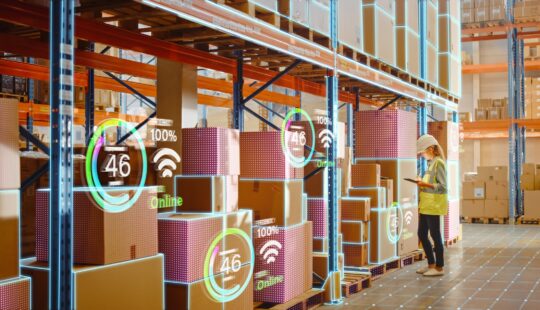Collaboration is key for Vincent Ruty, global vice president of the SAP Partner Solution Center organization within the Global Partner Organization at SAP. As a self-proclaimed coach and team player who takes controlled risks, Ruty leads 70 people in six teams across six regions.
Here, he discusses how his team provides solutions, innovation, and business development coaching to key partners through experts in regions and local presence.
Q: Tell us a bit about yourself. What are your hobbies and interests?
A: I was born and grew up in France, but I have lived in several parts of the world, including Canada, Spain, China, Taiwan, Mexico, and the U.S. Living abroad was a great experience, but two years ago my spouse and I settled in Paris and called that our home.
One of my hobbies is gardening. It’s something I did with my father as a child, and I enjoy growing a variety of plants, vegetables, and trees. Cooking is also a passion, especially as we’ve developed a taste for different cuisines from our travels. We call our cooking style “Asian fusion” – taking European ingredients, preparing them the Asian way, and pepping them up with Asian spices.
I appreciate diversity and different cultural backgrounds, so I joined an association that allows me to support underprivileged youth. It’s a refreshing experience to give back what I learned and create new relationships that make it possible to see the world through different eyes. I have learned a lot through that.
How did your career start, and how did you end up at SAP?
I ended up at SAP a bit by chance. After studying political science and marketing at university, I joined a large consultancy company, thinking that I would work on strategic business consulting engagements. There was a huge demand for enterprise resource planning (ERP) implementations at the time, and I was sent to weeks of training at SAP offices around Europe and became an SAP R/3 MM consultant.
In 2006, I decided to join SAP. I have always worked in SAP’s partner organization, except for a short break from 2013 to 2017 where I ran a partner sales and marketing operation in Asia, followed by a general management role in Latin America. My career at SAP has always been exciting, especially going through a transformation of different products, partnership business models, the company’s own cloud transformation, platform and technology centricity, and more. I never get bored.
All in all, I believe it’s important to keep yourself stimulated, be open to change, know what really matters to you in terms of values and work ethic, and find your fit within the organization’s strategy. It helps to have flexibility and a willingness to change career paths when it makes sense for the organization and for you.
You head SAP Partner Solution Center. What does your team do?
I have the pleasure of leading an incredibly culturally diverse team of 70 people, with various nationalities and languages and a presence in almost every SAP location around the world.
My team provides solution and innovation coaching to key partners within the Global Partner Organization through our local presence and experts in the regions. We focus on regional execution, which to me is the key to relevance. You stick to the priorities of the local organizations where the business execution really takes place. The ultimate objective is to help partners become self-sufficient in selling, demonstrating, deploying, and ensuring customers consume our solutions.
I like it a lot because it is all about collaboration and content, and my team builds close and trusted relationships with partners, partner management teams, and SAP lines of business and product teams. My team does an incredible job, and I would like to take this opportunity and thank them for everything they do.
We also contribute to SAP’s global strategic imperatives and programs, defining adoption programs or enablement content roadmaps. Locally, we execute global strategic topics like the SAP S/4HANA Movement, business transformation platform extensibility adoption, or, in this special year, partner solutions that help customers get back to business.
How does your team engage with SAP Partners?
We support a vast collection of digital enablement content, which is made available to all partner types and all roles through the SAP PartnerEdge edition of SAP Learning Hub. We have a really good, scalable platform and content that does most of the job to get the necessary knowledge to the partners.
But, the main focus of my team’s experts in the regions is what we call “high-touch enablement,” which involves a lot of coaching. We engage with a subset of partners, the ones that are most relevant to the business, through coaching programs that are very hands-on and linked to the achievement of specific business outcomes, such as having a packaged solution offering, a SAP S/4HANA Movement conversion factory, or even an extension migration to our platform. That’s what we call making partners “street smart” with practical expertise that they can leverage for their customer interactions.
Through very deep and long relationships with partners, my team has become trusted advisors, which partners value a lot. This is very rewarding.
What are you particularly proud of?
Relevance. Making and keeping what we do relevant for partners and for SAP means we need to reinvent ourselves every year, adjust our focus, start new things, and be willing to do some things differently. My most significant personal achievement is when partners, or even regional or local SAP teams, tell me that my team is one of the greatest assets or contributors to their success.
I’m also proud of partner solution packaging. It all began 15 years ago, when we started to package ERP into partner-packaged solutions called SAP Business All-in-One, which could be deployed rapidly with limited risk and high predictability for customers. This became a profitable business for our partners and for SAP. At the time, this required a lot of convincing, both internally and externally.
Little by little, the concept established as a key element of a volume go-to-market. It has grown beyond ERP to all solutions and beyond SME to all segments. Today, nobody doubts the relevance of packaging partners’ IP, know-how, experience, and deployment into standardized and scalable solutions.
Today, almost 1,200 SAP-qualified partner-packaged solutions are available globally, and my team continues to qualify and validate them. We are in the process of evolving the packaging concept to service-only packages, supporting customer consumption of SAP software.
Let me extrapolate the above example: my team also focuses on operationalizing innovations (solution innovation, go-to-market innovation) to become mainstream in the partner ecosystem. Take the Intelligent Enterprise, for example. Eighteen months ago, it was difficult for partners to articulate its meaning, strategy, and messaging. Today, we have 82 qualified partner intelligent enterprise ambassadors and 13 intelligent enterprise packages.
Or look at the SAP S/4HANA Movement: we have been qualifying 61 partner conversion factories covering 41 countries and 166 conversion packages, and my team has run sessions with partners and their indirect customers to onboard them on SAP S/4HANA.
Currently we strongly focus on platform adoption and extensibility. I really would like this to become our next success story.
How did the current pandemic affect you and your team?
One year ago, we wouldn’t have believed we would experience such a change in our day-to-day lives. We learned to cut our own hair and reorganized our homes. We spent the majority of time at home, homeschooling, home cooking, working from home, and home-everything. Part of it has been an interesting experience. But for many people, especially colleagues with young children, it has been a rough patch.
For our partner enablement business, like for many other businesses, the pandemic has accelerated our own digital transformation. From a mix of digital enablement, on-site bootcamps, and coaching workshops, we have been switching to 100 percent digital practically overnight. The challenge we had as a team was to keep our commitments to partners, and that meant continuing our enablement agenda.
We became very creative, restructuring content and exercises, reworking the overall structure, leveraging all options that the available digital tools provide, and involving more instructors. Remarkably, partner’s attendance was higher than ever, and they completed entire curricula digitally, with badges and certifications skyrocketing.
Like many other enablement teams, we have seen our metrics go through the roof. I believe we won’t go back to the previous state of traveling to deliver bootcamps. Those days are over. We have really gone one mark up in terms of efficiency, scalability, and productivity.
My team, and others, have also been remarkable in terms of keeping in touch with partners, conducting virtual coffee sessions to keep a bi-directional exchange. However, I am really looking forward to the day when we can resume travel, as I haven’t met two-thirds of my team members in person yet. Besides the social element, as teams and individuals, we need some creative intellectual stimulation through this serendipity that we have lost, these spontaneous discoveries or hints that we’ll get from someone we didn’t plan to meet, who tells us something we were not planning to hear.
What are your focus areas, and what can SAP partners expect soon?
For us in the Global Partner Organization, partners are our customers and also our lifeline. At the same time, lines are blurring between old partnership types, and we look at supporting partners across the different roles and phases of the entire customer engagement life cycle.
As a company, we are accelerating our own cloud transformation. It means structuring our operating model in the customer engagement framework called LACE, which stands for “Land, Adopt, Consume, and Expand,” making our platform ubiquitous and the best possible choice for our partners and customers while also promoting modification-free installations that are key to a real cloud model. This includes productized partners’ intellectual property (IP) and enriching our common cloud offering to the customers.
These strategic imperatives define the current focus areas for us as a team. In the coming months and years, partners can expect many enablement initiatives supporting these goals, such as an increased focus on delivery and consumption, with innovations like services and consumption packaging, more delivery enablement focused on quality and capabilities, external transparency to customers in regards to partners’ competencies, platform extensibility training for the various lines of business, programs supporting packaging and productization of partner IP, and much more.
Most importantly, my team will continue to deliver digital coaching to the partner ecosystem in all the regions, on a local level, and be there for them to innovate and win with SAP.



